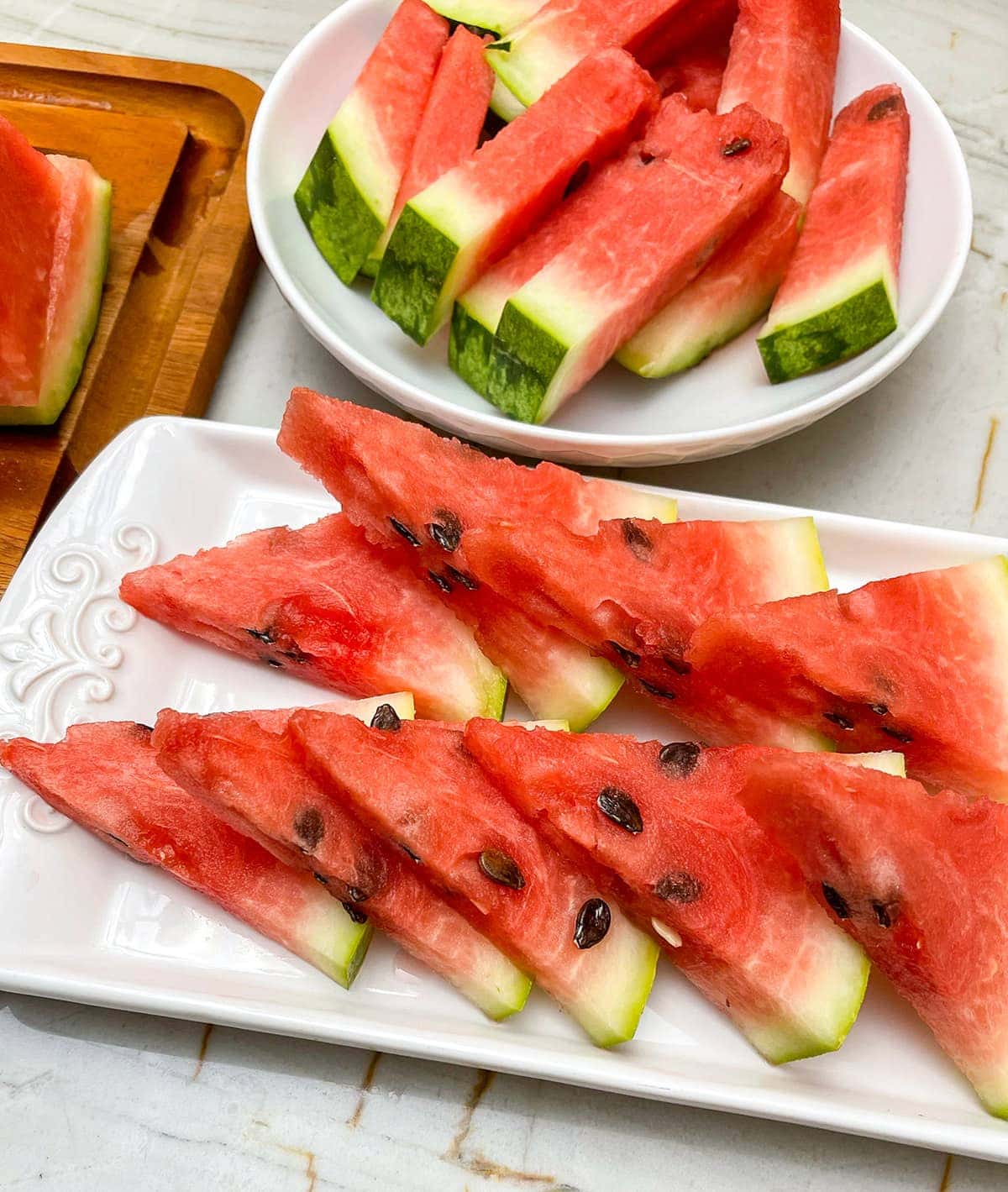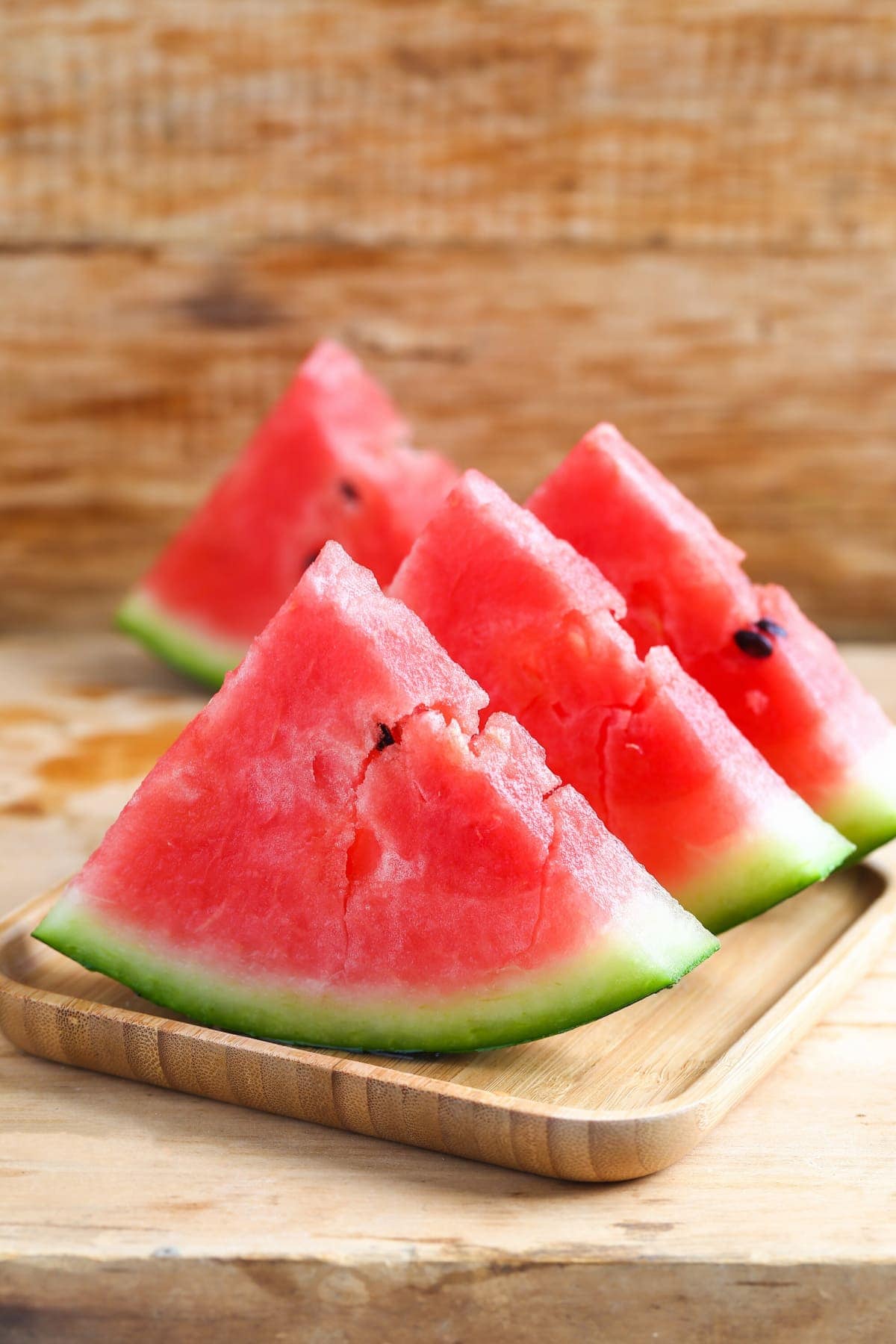How to Tell If Cut Watermelon is Bad?
How to Tell If Cut Watermelon is Bad?
Watermelon is really a sweet lovely summer food that is so refreshing. Since it is large and there are usually leftovers, know how to tell if cut watermelon is bad.
You can use watermelon to prepare fruit salads, serve it with dishes, drink it when you are thirsty, and enjoy it when you want. Buying watermelons appears to be a risk for several people. You would not want to finish with a melon that’s bland and immature. You can tell whether the watermelon has gone bad in a variety of ways.
How Long Does Cut Watermelon Last?
Watermelon Patch:
When checking at the patches or ripe place on a watermelon’s surface, anyone can tell if it’s terrible. It’s a great watermelon if the patch is yellow. If the area is white, that is not ripe and thus unsuitable for consumption. The presence of a yellow watermelon spot suggests that the fruit has been sun-ripened.
Color:
From the outside, the watermelon must have a robust, consistent pine greenish color or a striped look of darker pines and lemon green color. The watermelon will also have a dull, non-shiny appearance. This is not ripe if it is glossy. On the surface, the stem should not be apparent. Rather, look for a little crater that suggests the melon has fallen off by itself. A stem indicates that it was picked once it was fully ripe.
Weight:
A nice watermelon must have a lot of weight to it. This is related to the melon’s water and fiber content. Watermelons with more weight are tastier and juicier. A rotten watermelon is lightweight, indicating that it has little water.
Gritty and Dry:
Watermelon flesh that is dried and grainy is no longer appropriate. That’s because the rough flesh will wither and tear away from the seeds over time, becoming slimy and mushy. This watermelon has reached its peak of ripeness. Refrigerating the melon remains will prevent them from becoming dry and grainy due to air exposure.
Expiration:
Whenever you buy a pre-cut watermelon, it generally has an expiry date on it. This should not, though, guarantee that the melon would not rot before the deadline. If you eat watermelon that has a sour, sparkling, or tangy flavor despite the fact that it hasn’t passed its expiration date, spit it out and discard the rest away.
Deep Pink or Red Color:
When cutting a watermelon, check for red or deep pink flesh with black seeds, however, perfectly ripe watermelons are also available. This indicates that the melon is fresh, delicious, and nutritious. If the watermelon has changed colors, it has gone horribly wrong and must not be consumed.
Shape:
Choose one watermelon that is circular and symmetric. The watermelon is decaying inside if it has an uneven form. A watermelon having cuts, dents, or irregular lumps suggests that the water system was variable or that the melon was not pollinating completely. Watermelon dents or cuts could detect the presence of insects or fungus.
Firmness:
Touching the skin of the watermelon using the thumbnail can indicate how robust it is. If the skin of the melon readily cuts through it or yields to pressure when pressed, it is rotten or overcooked. It’s possible that this is the result of a fungal infection. The melon’s interior should not be mushy. The inside of the watermelon is exposed to the air, resulting in a mush watermelon. Discard your watermelon if that’s mushy, slimy, or discolored.
Smell It:
Watermelons don’t have much of a fragrance on the outside, but they do have a little pleasant smell. If you detect any signs of mold or mildew, toss it out. The inside of the watermelon is the same way. If you’ve sliced it up and aren’t sure if it’s edible since it appears to be, smell it for a sweet aroma. It should have a similar aroma to how it tastes. It has a pleasant mild sweetness to it.
Rot or Mold:
Examine the surface for any rotting or mold. If the skin has mold or black spots on it, it’s totally spoiled and should be discarded. Some pieces of the watermelon have indeed been eaten by bugs, resulting in red-brown patches. This is also a warning that the watermelon has gone rotten.
Conclusion:
Watermelon could go bad. It’s simple to see if it’s already happened. Examine the outer appearance, the looks of the flesh, and the fragrance for empirical proof. Due to its limited storage life, there are a variety of strategies you may do to increase it.
More fruit how-tos:
If you enjoyed this post about How to Tell If Cut Watermelon is Bad and would love to see more, join me on Youtube, Instagram, Facebook & Twitter!
Get discounted copies of my cookbook here.
Fortunately, because of the Ads on our website, readers and subscribers of Healthier Steps are sponsoring many underprivileged families.









Thank you for teaching how to cut watermelon